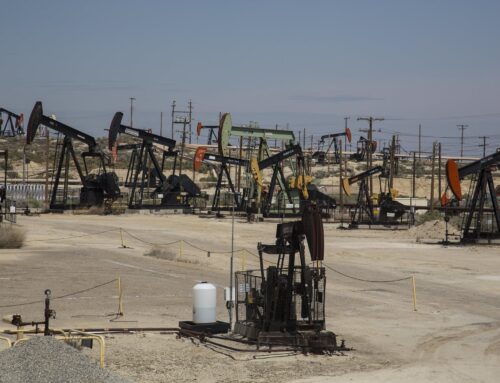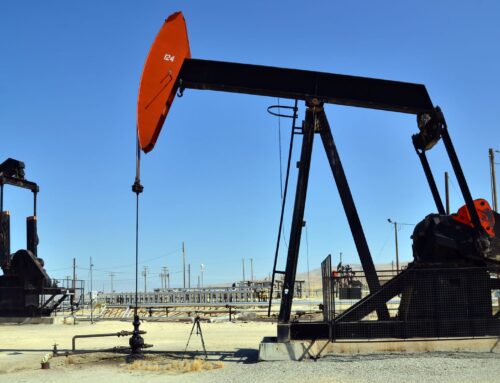On February 15th, Senators Heinrich (D-NM), Luján (D-NM), Cramer (R-ND), and Mullin (R-OK) reintroduced the Abandoned Well Remediation Research and Development Act (AWRRDA). The bill authorizes $162.5 million over FY2023-FY2027 to establish an abandoned well research, development, and demonstration (RD&D) program within the Department of Energy.
When oil and gas companies cease operations but fail to clean up their wells soon after, the wells are considered idled or abandoned. The main difference between an orphaned well and an abandoned well is that orphaned wells are a subset of abandoned wells that have no financially responsible party, which means that an abandoned well could have a responsible party. (For more information about orphaned vs. abandoned wells, read our FAQ.)
In November 2021, the Infrastructure Investment and Jobs Act (IIJA, P.L. 117-58) appropriated $4.7 billion to remediate orphaned wells on state, Federal and Tribal lands. Of that total amount, $30 million was appropriated for the Department of Energy to conduct R&D on identifying, characterizing, and mitigating the environmental risks from orphaned wells.
Both abandoned wells and orphaned wells that have not been cleaned up promptly and properly pose environmental and public health risks and need to be addressed. While it’s important to devote efforts and resources to develop an RD&D program that could detect and remediate abandoned wells more efficiently and effectively, it is also important to pair that effort with updates to decades old bonding rates to ensure responsible parties pay for cleanup in all possible cases. Oil and gas operators that once profited from these abandoned wells are essentially passing their environmental liabilities off to taxpayers when they don’t clean up. An oil and gas operator is required to submit an adequate bond or other financial assurance before drilling begins to guarantee that wells will be plugged and the surrounding land will be remediated. However, the minimum bond requirements for wells on federal lands were originally established in the 1950s and 1960s and have never been adjusted for inflation. According to a Government Accountability Office report published in 2019, the average value of bonds held by the Bureau of Land Management in 2019 was $2,122 per well while the full reclamation costs can range from $20,000 to $145,000 per well. While abandoned wells must be addressed in a timely manner, Congress must hold oil and gas operators responsible for their costs of doing business by increasing bonding requirements. This will help ensure taxpayers will not continue to be on the hook for future liabilities.
Summary of Provision included in AWRDDA:
- Establish the Abandoned Wells Research, Development and Demonstration Program within the Department of Energy
- Research, development, and demonstration activities include improving
- Remote sensor and LiDAR capabilities, optical gas imaging, magnetic survey technology, and any other technology that could efficiently identify abandoned wells
- Understanding of how certain parameters of abandoned wells affect methane emission rates of such wells, including parameters such as well age, well depth, geology, construction, case material, and geographic region
- Efficiency and cost-efficacy of processes for plugging, remediating, reclaiming, and repurposing abandoned wells, including
- Processes and technologies for plugging remoted abandoned wells
- Use of low carbon, lightweight cement, or alternative materials for plugging
- Repurposing of abandoned wells for alternative uses, including geothermal power production and carbon capture, utilization, and storage (CCUS)
- Defines an abandoned well as a well originally drilled in connection with oil and gas operations that is not being used, has not been plugged, and has no anticipated use in oil and gas operations
- Authorizes appropriation of:
- $30 million for FY2022
- $31.25 million for FY2023
- $32.5 million for FY2024
- $33.75 million for FY2025
- $35 million for FY2026
- $162.5 million total for FY2022-FY2026
- Research, development, and demonstration activities include improving
NOTES:
H.R.3684 – Infrastructure Investment and Jobs Act (BIF)
Sec. 40601 Orphaned Well Site Plugging, Remediation and Restoration
- Idled Well definition
- A well that has been nonoperational for no fewer than 4 years and has no anticipated future beneficial use
- Orphaned Well definition
- Regarding Federal and Tribal land
- A well that is not used for an authorized purpose (production, injection, or monitoring, and
- for which no operator can be located
- the operator of which is unable to plug the well and remediate and reclaim the well site
- that is within the National Petroleum Reserve – Alaska
- Regarding state and private land
- Defined by the applicable State
- $30M for DOE to conduct research and development activities in cooperation with the
- A well that is not used for an authorized purpose (production, injection, or monitoring, and
- Regarding Federal and Tribal land
Interstate Oil and Gas Compact Commission to assist the Federal land management agencies, States, and Indian Tribes in
- identifying and characterizing undocumented orphaned wells; and
- mitigating the environmental risks of undocumented orphaned wells
Sec. 40341. Solar energy technologies on current and former mine land.
- Revise Energy Act of 2020 Sec. 3004 Solar Energy Research and Development to include
- A description of the technical and economic viability of siting solar energy technologies on current and former mine land, including necessary interconnection and transmission siting and the impact on local job creation
Sec. 40342. Clean energy demonstration program on current and former mine land.
- Establish a program to demonstrate the technical and economic viability of carrying out clean energy projects on current and former mine land
- Secretary of Energy to select no more than 5 projects, at lease 2 of which should be solar, clean energy projects like
- Solar
- Micro-grids
- Geothermal
- Direct air capture
- Fossil fueled electricity generation with CCUS
- Energy storage
- Advance nuclear technology
- Priorities given to projects
- In a location where the greatest number of jobs can be created from the successful demonstration
- That provide the greatest net impact in avoiding GHG emissions
- That provide the greatest domestic job creation during the implementation of the project
- Provide the greatest job creation and economic development in the vicinity of the project, particularly
- In economically distressed areas and
- For dislocated workers previously employed in manufacturing, coal power plants, or coal mining
- $100M for each of FY22-26










